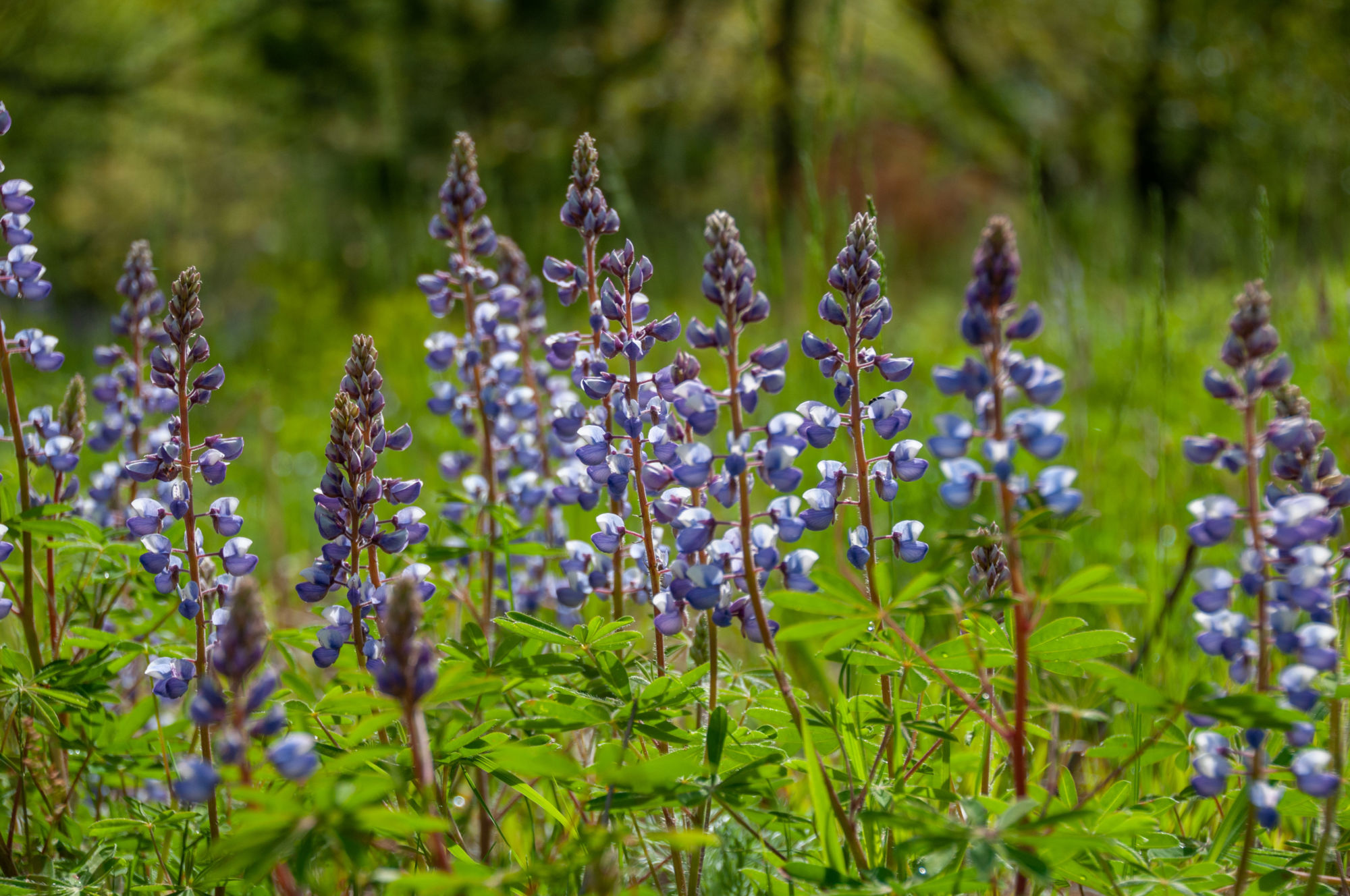Step 3: Plant a Community
In the first couple of years after planting a prairie, the aesthetics leave a bit to be desired. In year one, the entire plot will be brimming with horseweed, a native weed that thrives in disturbed soil. The next year, it’ll be covered in Queen Anne’s lace, another short-rooted weed. In addition to not being very diverse, things look a little ugly. It would be easy to become discouraged, but patience is another ecological virtue.
A hallmark of the plant species native to tallgrass prairies is their deep-growing roots, and the plants spend a few years establishing those before they send stems and blossoms above the soil. By year three, black-eyed Susan and goldenrod begin to bloom. In subsequent years, grasses like big bluestem, Indian grass, and switchgrass emerge. The spring season is soon marked by the appearance of wild blue lupine. The improvement begins to be undeniable.
“Back when half of the site remained an old field, we could stand between the degraded and restored sections and experience the difference with our eyes and ears. The native species were quickly colonized by insects for food and habitat,” Dwight Baker said.
As the plant and pollinator communities grew, so too did the community of people who frequented Saul Lake Bog Nature Preserve.
Photo monitoring images showing the change over time in a section of prairie planted in 2017, submitted by visitors to Saul Lake Bog Nature Preserve.
After about ten years, it became possible to collect seeds from within the established prairie to expand the remainder. Seed collecting at Saul Lake Bog Nature Preserve became an annual volunteer event, and so did the Black Friday Prairie Planting.
For the last decade, the Land Conservancy of West Michigan has invited volunteers to participate in the expansion of the prairie on the day after Thanksgiving, or Black Friday, which is most known as a doorbuster shopping extravaganza. The tradition began in part because it’s an optimal time to get seeds on the ground.
“That was [Dwight’s] observation that when you throw a whole bunch of seed out in front of a bunch of hungry wild birds, they’re going to take advantage of it,” Randy Van Dragt said. “What you want to do is to try to plot something that’s late enough in the season that they’ve gotten used to other food sources, and then hopefully you get a snow on top of it.”
Planting seeds on top of an early snow is ideal, as well, Chris Baer noted. It’s easier to see the areas you’ve covered with seed, and the seeds will melt into the snow cover when warmed by the sun.
The annual Black Friday Prairie Planting grew in popularity as people looked for ways to “opt outside” and spend the day far away from a shopping mall. It became one of the Land Conservancy’s most popular volunteer opportunities. Hundreds of people were introduced to Saul Lake Bog and the Land Conservancy of West Michigan through planting seeds in the prairie.
“So many more people learned about [the preserve] because of the Black Friday workdays,” said Mindy Miner, LCWM volunteer and former Preserve Steward of Saul Lake Bog Nature Preserve. “It’s so good to see that more people know about it now.”
Today the 34-acre prairie boasts 157 unique plant species. According to eBird, 168 unique bird species have been spotted on the preserve. And these days you can see more people there, too.
It used to be that you could visit the preserve and reliably find yourself alone.
“Now when I go out there, I almost always see another car at least,” Mindy said.
Despite its growing popularity, the preserve remains a peaceful place.
“It’s a place to go to experience nature and not have a billion people there,” Chris said.
“It’s just a really special place,” Mindy said.
This story was part of our Fall 2025 Newsletter. You can read the newsletter in its entirety here.
Would you like to receive print copies of our newsletter in the future? We mail annual supporters our newsletters twice a year. Donate to the Land Conservancy of West Michigan today, and you’ll be subscribed!






